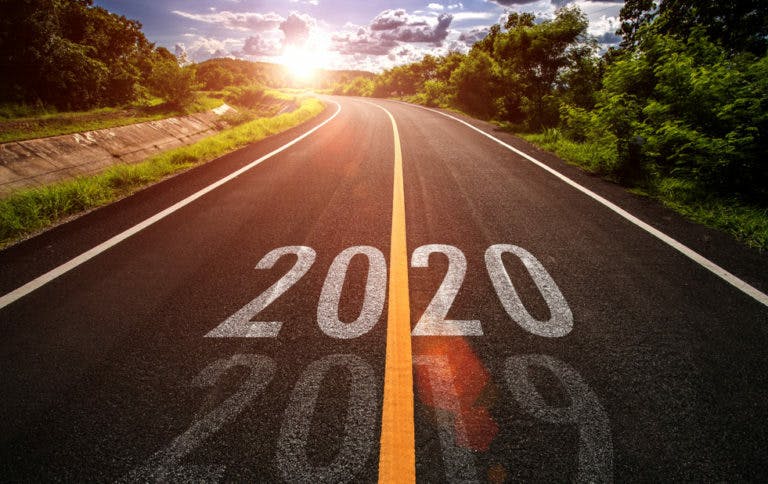EB-5 expert Suzanne Lazicki says that various factors will determine the number of EB-5 Green Cards issued in the coming year. She notes that visa rollover from other categories will give EB-5 almost 1,000 more visas in 2020. Interestingly, she surmises USCIS is “inflating” published processing times to “discourage complaints and inquires” — not because processing is actually taking longer.Suzanne Lazicki tells us that 70,000 EB-5 applicants have filed their I-526 petitions and are awaiting judgment on their bids for conditional permanent residency. She tells us the number of those investors who receive their Green Cards depends on three prominent factors: Visa availability, I-526 processing, and country caps.
Extra Visas for EB-5 ||abc|| China in particular
Rollover from other categories allows unused visas to be given to the EB-5 program. In 2020, the Department of State (DOS), will give 11,111 visas to the immigrant investor program. Country caps allow for 7% or 778 visas to go to any one country. China in a unique situation and gets 288 allocated visas plus all those from countries that don’t use up their full quota. DOS stated in October that in FY 2020 about 5200 visas will go to China, almost 1,000 more than in FY 2019.
I-526 processing times: are they really going up?
Lazicki advises that to understand the “puzzle” of true EB5 Green Card processing times, three data sources can be reviewed: USCIS Check Case Processing Times page, (bimonthly updates) the Historical Average Processing Times page (annual averages), and the Immigration ||abc|| Citizenship Data page (quarterly updates). These three different sources each give us different pictures of I-526 processing.The Check Case Processing page currently estimates 32.5 to 49.5 months for I-526 processing. Of note, USICS has published estimates of 27 to 52 months since June 2019.This Historical Average Processing page gives us an I-526 processing average of just 19.8 months in FY 2019.The Immigration ||abc|| Citizenship Data page shows 13,000 pending I-526 applications as of June 2019. Lazicki tells us that it would take three to five years to process that number of EB5 investors— if USCIS processed less than 4,000 a year. But she also observes that in 2018 USCIS was processing around 4,000 per quarter.
An interesting take: high processing estimates may not be accurate
This apparent disparity in processing times begs the critical question: is USCIS really processing I-526 petitions at just 25% the rate they used to in 2018? Lazicki presents a very interesting possibility: “I incline toward the theory that USCIS started, mid-FY2019, to inflate the months reported on the Check Case Processing page to discourage complaints and inquiries, not because the average I-526 petition has been or will be pending 3-5 years.”As an expert in understanding EB-5 numbers, Lazicki subscribing to such a theory can give EB-5 stakeholders both a sense of irritation with USCIS (if they are indeed “cooking” the numbers to lessen the load on their Inbox) and a reason for optimism if processing times are better than we are led to believe.A more real and accurate understanding of this “puzzle” will be seen soon, Lazicki states, when more recent processing volume numbers become published. She hopes that USCIS will make a concerted effort to improving processing times in 2020 to improve “EB-5 program integrity and viability.”
What are the chances country caps are removed?
Country caps are the reason why nationals from China, India, and Vietnam must endure onerous wait times for EB5 as they are oversubscribed to the immigrant investor program and have thus created substantial backlogs. These caps would disappear if The Fairness for High-Skilled Immigrants Act (H.R. 1044) became law.The act passed the House by a huge majority in July 2019; Senator Mike Lee has since been lobbying deftly to push its companion act (S.386) in the Senate. Lazicki reminds us that the act has existed for five Congresses, and as such, “I do not really expect it to pass now.” But she also does not see that as an impossibility given the political support the act has received.While Chinese nationals in pursuit of an EB5 Green Card would celebrate the bill becoming law, EB-5 investors from other nations would, according to Lazicki, see their wait time increase to 3-7 years, depending on their priority dates. So “Fairness” would then become a relative term.
The Visa bulletin: India will advance until demand increases
For most counties, EB-5 is “current” allowing their potential immigrant investors to file applications at any time.India’s Final Action Date has leapt from 1/1/2018 in December 2019 to 5/1/2018 in January 2020. Such advances are likely to continue for Indians until “demand increases” for the US Green Card by investment. Lazicki notes that “demand” here is a relative concept and dependent on USCIS processing times. She conjectures that the Indian Final Action Date advances will slow down and possibly fall back in 2020.On a positive note, for countries other than the big three that are retrogressed (China, India, and Vietnam), Lazicki sees them remaining “current” in 2020 as most will not have more than 778 applying this year.
Fourth Quarter FY 2019 processing numbers
The most recent U.S. Citizenship ||abc|| Immigration Services (USCIS) processing numbers have been published. As the EB-5 modernization rule was due to become policy, I-526 petitions, as expected, shot up dramatically.The recent trend of low I-526 processing numbers continued this quarter. And denials continued to be quite high with 190 denials compared with 356 approvals. A question to ask is if the rush of would-be immigrant investors to make the late-November deadline led to some sloppy or incomplete petitions.On the other hand, I-829 petitions gave much more rise to optimism with few denials.
I-526 numbers
- FY 2019 quarter 4: 1,191 petitions received by UCSCI, with 356 approvals, and 190 denials.
- FY 2019 quarter 3: 615 petitions received by UCSCI, with 333 approvals, and 246 denials.
- FY 2019 quarter 2: 580 petitions received by UCSCI, with 795 approvals, and 180 denials.
- FY 2019 quarter 1: 1,808 petitions received by UCSCI, with 2,175 approvals, and 398 denials.
We can see that approvals were more than double as recently as the second quarter of FY 2019, (with an even lower number of denials that quarter). And in the first quarter, approvals were more than six times the number we just experienced in quarter four. Clearly, something has shifted very recently with USCIS and one can hope that the recent EB5 news of new regulations is a factor.
I-829 numbers
- FY 2019 quarter 4: 867 petitions received by UCSCI, with 349 approvals, and 12 denials.
- FY 2019 quarter 3: 1,171 petitions received by UCSCI, with 574 approvals, and 39 denials.
- FY 2019 quarter 2: 921 petitions received by UCSCI, with 270 approvals, and 15 denials.
- FY 2019 quarter 1: there were 797 petitions received by UCSCI, with 443 approvals, and 31 denials.
Looking at I-829 processing, we have a greater sense of optimism and relief. Processing rates here, unlike with I-526 petitions, are not dropping significantly. And denial rates have dropped over the fiscal year. The story here seems to be that when an immigration investor receives his or her conditional Green Card by investment, they have an excellent chance of having those conditions removed after their I-829 filing.Read Lazicki’s very comprehensive blog on EB-5 timing in 2020





